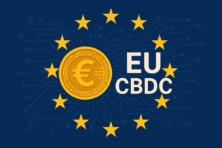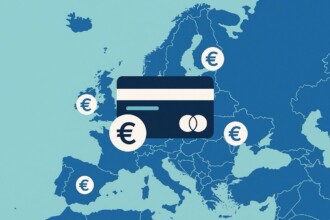Fintechs and neobanks nurtured and grown on European grouds are increasingly getting on their feet and sharpening focus on the U.S. market. Here’s why.

Attentive industry observers have been spotting a distinctive pattern over the last few years, that accelerated through 2025: challengers that built scale and product breadth across Europe are using targeted, regulatory-savvy moves to establish U.S. footholds. They choose different strategies to expand, often starting with product launches, broker-dealer registrations or SaaS subsidiaries rather than full national bank charters.
EU Neobanks Entering U.S. Market in 2025
Take bunq. The Dutch neobank in October 2025 secured FINRA/SEC broker-dealer approvals that let the firm offer investment and custodial services to U.S. customers. Strategically, it gives the fintech some time to test the waters and establish some brand awareness among local population while it prepares for a fuller banking application. bunq has framed the broker-dealer route as the first phase of a two-step U.S. strategy: test product-market fit, learn regulatory ropes, then refile for a banking licence when ready.
Product-first expansion is another visible route. Revolut, one of Europe’s largest digital banks, pushed deeper into the U.S. in 2025 by rolling out a high-yield savings product that offers significantly higher APYs than many incumbents provide. This approach might boost the firm’s competitiveness in the foreign market, attracting deposits and scaling customer lifetime value in a lucrative region. This kind of product focus lets European firms monetise quickly without taking on the full complexity of a U.S. retail banking charter.
Klarna (Sweden) has gone a reverse way though, having piloted a U.S. debit card in 2025 with its partner issuer prior to expanding the product to domestic EU markets. Pliant, a B2B payments fintech based in Germany, in spring 2025 raised $40 million and publicly announced a U.S. expansion push. Aspora, the UK-based fintech focused on cross-border banking for diaspora communities, made its U.S. launch in July 2025.
Not all activity is retail-brand launches though. Some incumbents are using technology or corporate pathways to enter. For instance, Starling Bank’s technology arm, Engine by Starling, set up a U.S. subsidiary in 2025 to sell core banking technology and services to local partners. This way can help companies capture revenue and build relationships while keeping options open for a deeper consumer push later.
Meanwhile, Wise and Checkout.com have been present in the U.S. market for years, currently expanding their operational foothold with new capabilities, enhanced teams and some regulatory pursuits.
What Should We Expect Next Year
What’s next? Several European names are reportedly preparing renewed U.S. efforts in 2026. Thus, Monzo has been publicly linked to plans to reapply for a U.S. banking licence after a previous attempt stalled, signalling that the appetite for a U.S. footprint remains strong across the challenger set. Meanwhile, other players, like Starling, continue to weigh acquisition, partnership or licence routes depending on cost, regulatory complexity and strategic fit.
Why Are Many European Fintechs Chasing the U.S. Opportunities?
-
Scale and deposits. The most obvious pull is market size: the U.S. retail banking market offers a far larger pool of customers and deposit funding than most European countries, making it attractive for deposit-dependent product economics and funding diversification. Although, in absolute economic terms, the U.S. market is roughly comparable in size to the entire EU, it is often considered more attractive than fragmented EU scaling because it is a single, unified, high-income market with consistent regulation and higher per-capita revenues.
-
Higher ARPU potential. U.S. customers historically generate higher average revenue per user for lending, cards, and wealth products, making it worthwhile for challengers to test premium or yield products early. Broker-dealer permissions let European firms monetise investing and custody services even sooner than they launch full scale.
-
Regulatory and market diversification. Europe’s regulatory shifts, macro headwinds and competitive saturation are nudging firms to diversify geographies. A presence in the U.S. is both a growth opportunity and a hedge.
-
Flexible entry paths. The U.S. market can be entered gradually through partnerships with insured banks, broker-dealer registrations, targeted product launches, or tech exports (SaaS). That range of options reduces upfront risk compared with trying for an immediate nationwide banking charter.
-
Competitive positioning. With global scale local players and non-European entrants aiming at the U.S., European challengers feel pressure to establish early, defensible positions before slots close up. Nubank’s recent U.S. charter filing in 2025 also underscores the intensifying competition for U.S. digital customers and talent.
The 2025 playbook suggests European fintechs are applying pragmatic, staged strategies rather than all-in gambles. They indulge in product experimentation, alternative license routes and partnerships to win a slice of the world’s largest digital banking market.









